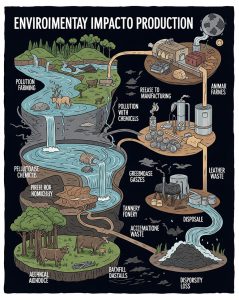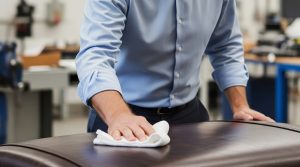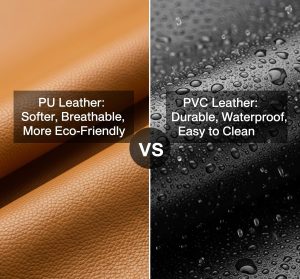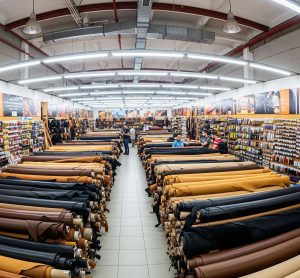As synthetic materials become increasingly popular across industries, many consumers find themselves asking: will it last? One concern that frequently arises when it comes to synthetic leather — especially among buyers of furniture, car interiors, shoes, or handbags — is the dreaded issue of peeling. We've all seen cracked or flaky faux leather surfaces and wondered whether it’s a question of the material itself or how it's cared for.
This is especially relevant when talking about mikrofiber deri, a high-end synthetic alternative to genuine leather. So, let’s address the question head-on: does microfiber leather peel? The short answer is — not if it’s made well and treated properly. In fact, microfiber leather is one of the most resilient and durable alternatives on the market, and in many ways, it outperforms traditional leather and cheaper synthetics.

What Exactly Is Microfiber Leather?
Microfiber leather, also known as microfiber synthetic leather or microfiber PU leather, is a next-generation artificial leather. It’s engineered using extremely fine fibers — usually polyester or nylon — that are woven together to mimic the fibrous structure of natural animal hide. This microfiber base is then coated with a high-grade layer of polyurethane (PU), which gives the material its smooth, leather-like surface and flexibility.
What sets microfiber leather apart is how closely it replicates not just the look and feel of real leather, but also its internal structure and performance. Unlike traditional PU leather or bonded leather, which can be made from plastic film or leftover leather dust glued to a base, microfiber leather is built from the ground up for strength, breathability, and endurance.
This is why it’s often found in high-performance environments like automotive interiors, luxury upholstery, sports gear, and even designer handbags. It’s made to last — and importantly, it’s made to resist peeling.
So, Does Microfiber Leather Peel?
When it comes to well-manufactured microfiber leather, the answer is no — it does not peel the way that low-cost PU leather or bonded leather often does. The key lies in its structure.
Traditional PU leather is a thin plastic coating on a fabric base. Over time, that coating can dry out, crack, and separate — especially under stress, sunlight, or humidity. Microfiber leather, by contrast, has a densely woven interior and a more integrated polyurethane layer, meaning the surface doesn't flake or separate easily.
This makes it especially resistant to common wear-and-tear issues like:
Surface cracking
Flaking edges
Sticky or peeling spots
Because of its high tensile strength and better elasticity, microfiber leather can stretch and recover more effectively without damage. It also maintains its appearance longer, even with frequent use.
Why Microfiber Leather Is So Resilient
One of the biggest reasons microfiber leather performs so well over time is its composition. The microfiber base mimics the three-dimensional network of collagen fibers in real leather. This gives the material a stronger foundation and better breathability than most synthetic leathers.
On top of that, the polyurethane layer used in microfiber leather is typically more advanced and less brittle than the plastic layers used in cheap PU leather. It’s applied more evenly and securely, which means the chances of it separating or peeling away are significantly reduced.
Microfiber leather also holds up well to moisture and heat, especially when coated with additional finishes for water resistance or UV protection. This makes it ideal for applications where comfort, appearance, and long-term durability matter.
When Peeling Does Happen: The Exceptions
While high-quality microfiber leather is unlikely to peel, there are some scenarios where problems can arise — just like with any material.
One common issue is low-grade manufacturing. Not all microfiber leathers are created equal. Some factories may use weaker binding agents, poor-quality fibers, or uneven coating processes that compromise the material’s integrity. These products may still be labeled as “microfiber leather,” but they won’t perform to the same standard.
Additionally, exposure to extreme environmental conditions — such as high humidity, prolonged sunlight, or chemical cleaners — can gradually break down even the best materials. Over time, heat and UV rays can weaken the surface finish, especially if it’s not reinforced with protective coatings.
Finally, lack of care or improper cleaning methods can lead to degradation. Using harsh solvents, alcohol-based products, or abrasive cloths can wear down the protective layer and create surface instability.
How to Keep Microfiber Leather in Top Shape
The good news is that microfiber leather is quite low-maintenance compared to real leather — but a little care goes a long way.
To extend its life and avoid any chance of peeling:
- Clean with a soft cloth and mild soap or a specialized synthetic leather cleaner.
- Avoid direct and prolonged exposure to sunlight or heat sources.
- Keep it dry — microfiber leather is water-resistant, but soaking and humidity should still be avoided when possible.
- If your product came with care instructions from the manufacturer, follow them closely.
With these simple practices, it’s entirely possible for microfiber leather items to last many years without any signs of cracking, fading, or peeling.
Conclusion: Microfiber Leather Is Built to Last
In an age where durability, sustainability, and value all matter, mikrofiber deri stands out as one of the most promising materials on the market. It combines the elegance of real leather with the resilience and versatility of modern synthetic engineering — and best of all, it holds up beautifully over time.
While no material is indestructible, high-quality microfiber leather is highly unlikely to peel, especially when compared to cheaper synthetic leathers. Whether you're shopping for a new sofa, handbag, pair of shoes, or car interior, choosing microfiber leather is a smart investment in both style and substance.
Next time you're browsing options and worried about peeling or cracking, remember: not all synthetic leather is created equal — and microfiber leather might just surprise you.








